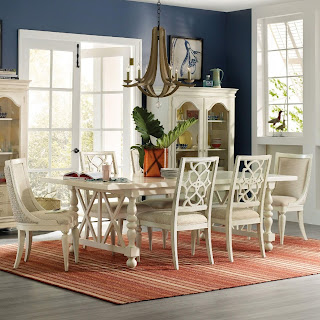When you are choosing the right wall to highlight and the right color to paint it, it helps to consider the room’s architectural and design details as well as basic color psychology. Here are some great tips on how to choose the right accent wall for your space.
Let the Room Speak to You
The first step in choosing an accent wall is deciding where you want that splash of color or texture. Not to get all new-agey on you, but the room will tell you where to put your accent wall. The accent wall is the first thing you see when you enter a room. Look around and see which wall draws your eye. It may have well-defined architectural details you can highlight such as wainscoting, built-ins, or an architectural nook. Or an anchor wall behind the bed. If you choose the wrong wall, the balance and harmony of the room can be disrupted.Tip: Walls with architectural detail, texture, or even windows are ideal for accent walls.
Consider the Room’s Purpose
Color psychology proponents assert that color has an effect on people, and it does. This theory has been used in advertising for years. Some colors, such as red, are very energetic and attention-getting. Red has come to represent danger and excitement, hence its use for things such as stoplights, stop signs, and fire engines.The color of war, blood, and passion, red stimulates the metabolism and increases both the heart and respiratory rates. This is why you seldom see reds in the bedroom, but often see it used in kitchens. When deciding the color for your accent wall, consider the room’s purpose and the mood you want to create.
Tip: Don’t limit yourself to simple wall paint, experiment with other ways to create a mood, such as stripes or a metallic paint finish.
Use the 60-30-10 Color Rule
Don’t get overwhelmed by the plethora of paint colors available when choosing the color for your accent wall. You can avoid this by using the 60-30-10 rule. Here’s how to use it:- Use 60% of your dominant color in your room’s décor and painted surfaces
- Use 30% of your secondary color
- Use 10% for your accent color
Tip: You can add an accent wall to a neutral space, use a rich brown rather than a bright color.
Take Color Saturation into Consideration
Color saturation is also important when creating a harmonious color scheme. Color theory recommends using a tint as the dominant color in the space, a toned color for the secondary color, and a saturated color for the accent color. This makes the accent color really pop. Tints have been lightened by adding white and tones have been muted by adding gray.Using this theory, your accent wall should be the most vivid or darkest color in the room, accented by throw pillows, area rugs, and other décor items that integrate the color and balance it in the space.
Tip: Don’t shy away from bold color for your accent wall. Make it work by using the right accents throughout the space.
The location of your accent wall is purely personal. Your home reflects you, so your accent wall should be as special as you are. Following the how-tos above will help you create an accent wall as unique as you are, wherever you decide to put it.
Learn more about Baer's Furniture. Find more design inspiration and read Baer's Furniture reviews on Houzz.


No comments:
Post a Comment